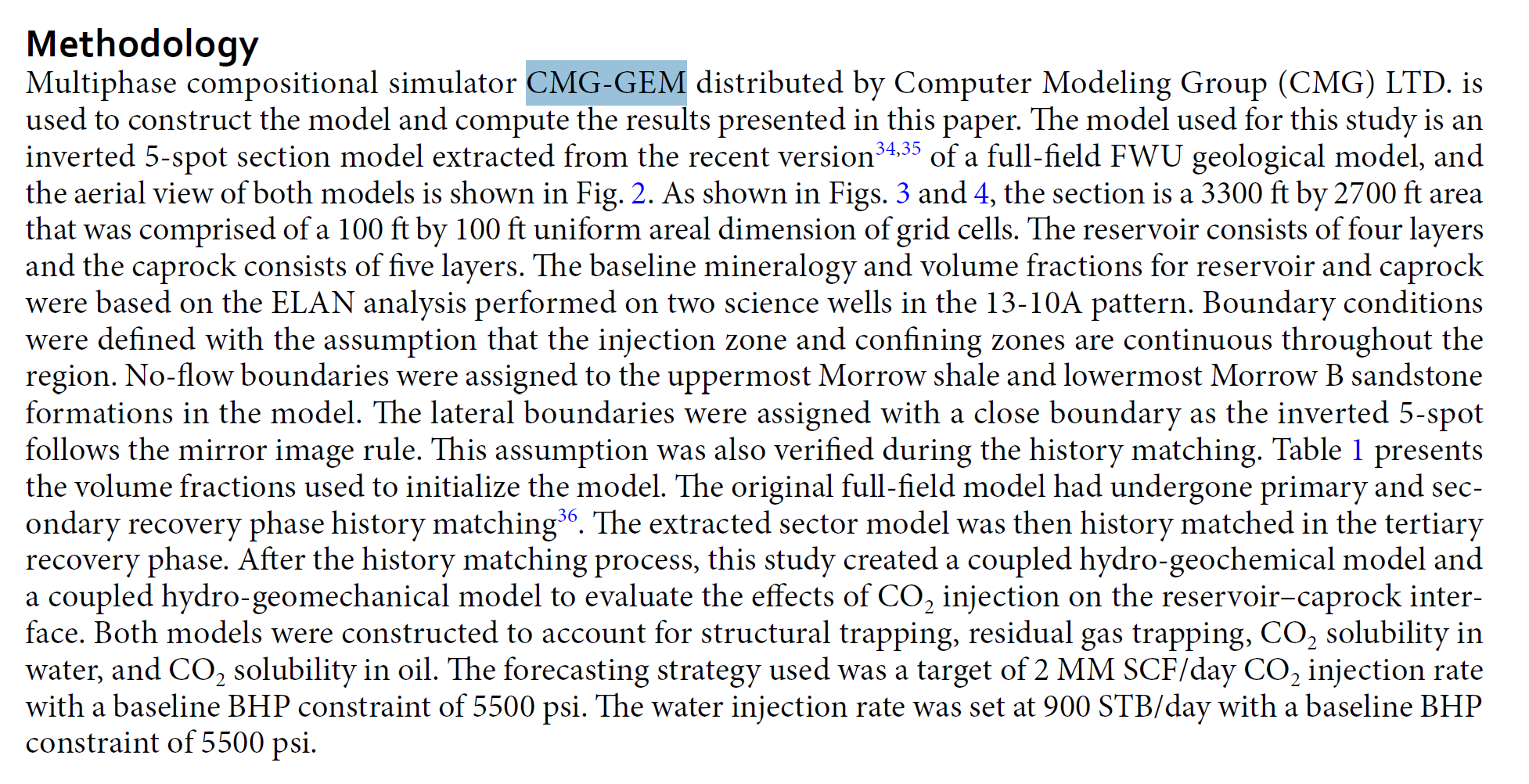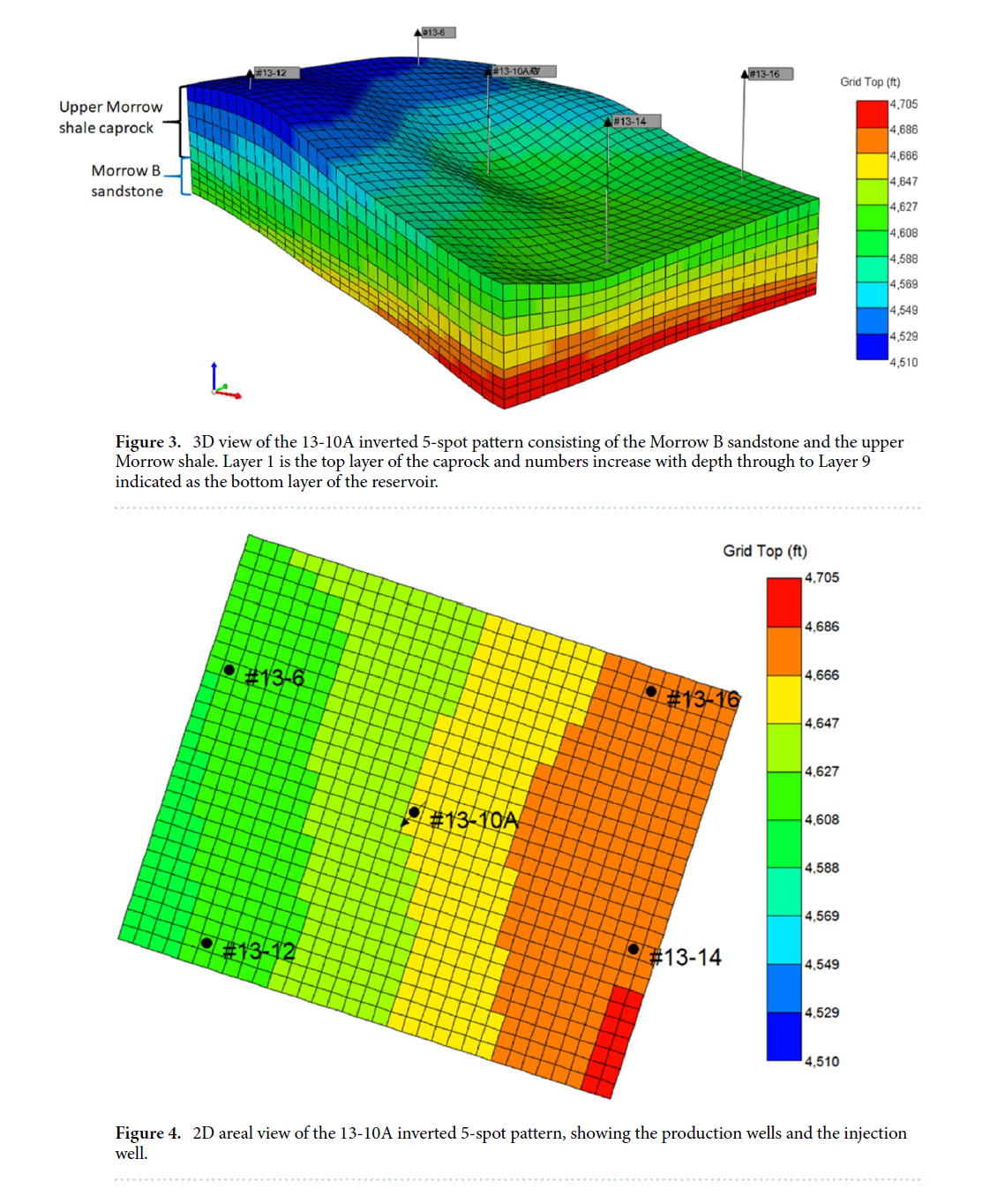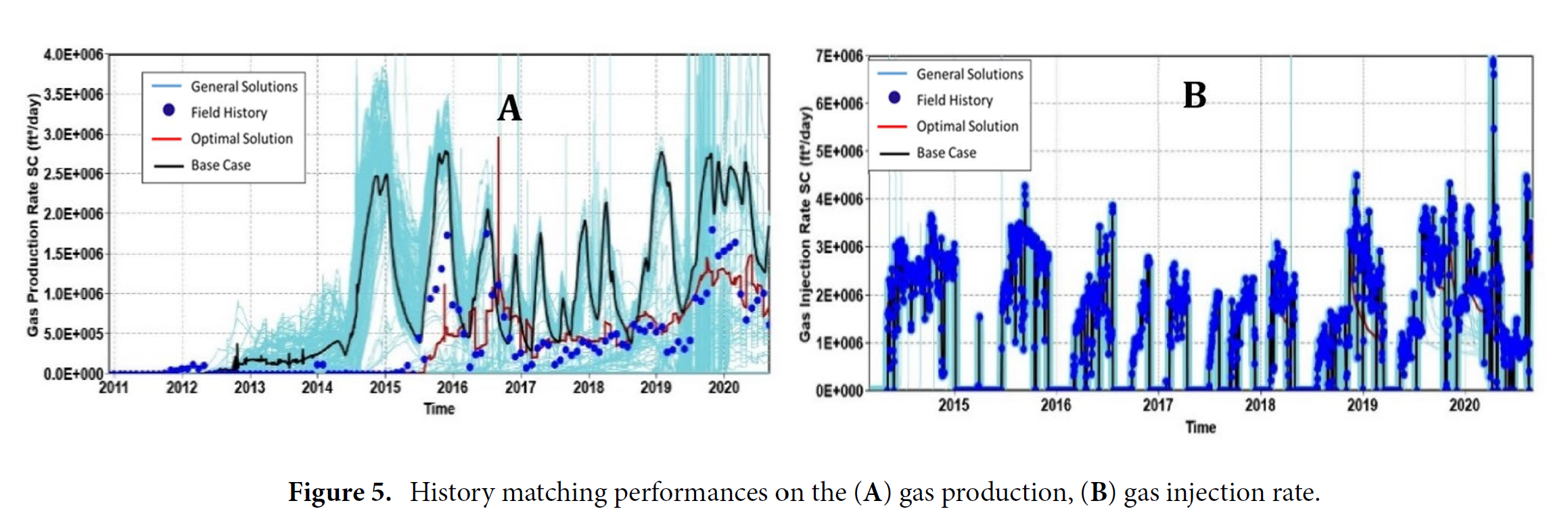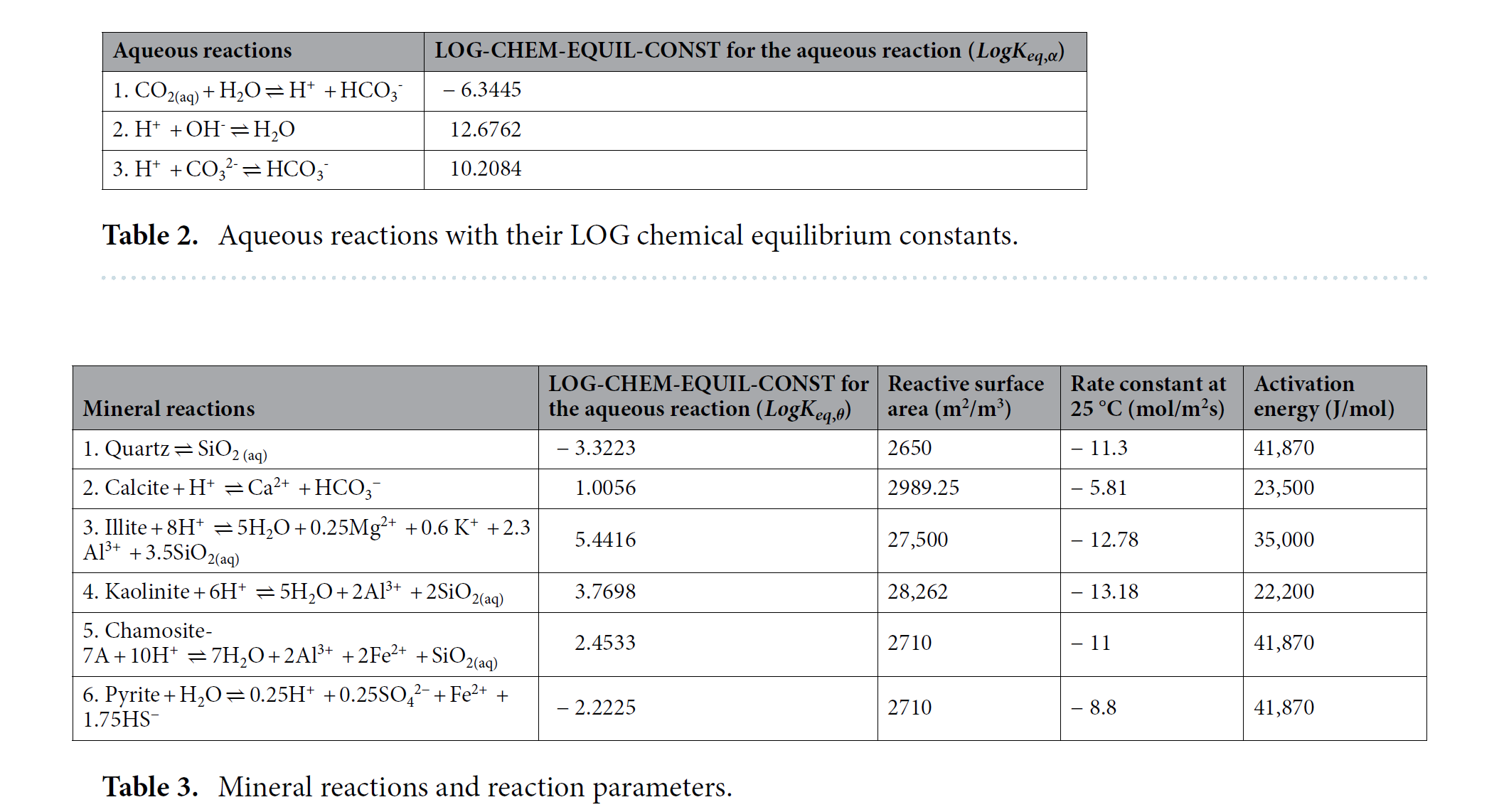Assessment of chemo-mechanical impacts of CO2 sequestration on the caprock formation in Farnsworth oil field, Texas
Abstract
本研究利用Farnsworth Unit(FWU)油田内以13-10A井为中心井的反五点井组数据,评估注入CO2对Morrow B砂岩储层和 Morrow泥岩盖层的地球化学和地质力学影响。本研究还试图评估盖层的完整性和FWU油田的长期CO2封存能力。
在模拟工作之前,从矿场尺度模型中提取反5点井组模型,并利用可用的现场实测数据进行拟合。利用两个耦合的数值模拟模型继续研究。首先,建立了一个耦合的渗流力学-地球化学模型,通过模拟三种水相和六种矿物反应来模拟地层矿物的溶解和沉淀。此外,还建立了一个耦合的渗流力学-地质力学(流固耦合)模型,并利用该模型研究了应力变化对盖层孔隙度、渗透率和地面位移的影响。用莫尔-库仑圆准则和破坏包络线确定盖层破坏。本研究中,CO2-WAG注入之后是历史现场观察方案。
在预测期间,采用了1:3的水交替气体(WAG)注入比,20年的基准井底压力约束条件为5500 psi。模拟了注入后1000年的时间,以监测CO2羽流及其对CO2储层和盖层完整性的影响。模拟结果表明,地球化学反应对盖层孔隙度的影响微不足道,因为在1000年的注入后监测结束时,盖层孔隙度下降了约0.0003%。另一方面,最大应力引起的孔隙度变化约为1.4%,导致渗透率变化约为4%。据估计,地层中约3.3%因CO2与盖层相互作用封存。尽管盖层中存在这些岩石物理性质变化和CO2相互作用,但盖层仍保持其弹性属性,并被确定远未失效。
This study evaluates the chemo-mechanical influence of injected CO2 on the Morrow B sandstone reservoir and the upper Morrow shale caprock utilizing data from the inverted 5-spot pattern centered on Well 13-10A within the Farnsworth unit (FWU). This study also seeks to evaluate the integrity of the caprock and the long-term CO2 storage capability of the FWU.
The inverted 5-spot pattern was extracted from the field-scale model and tuned with the available field observed data before the modeling work. Two coupled numerical simulation models were utilized to continue the study. First, a coupled hydro-geochemical model was constructed to simulate the dissolution and precipitation of formation minerals by modeling three intra-aqueous and six mineral reactions. In addition, a coupled hydro-geomechanical model was constructed and employed to study the effects of stress changes on the caprock’s porosity, permeability, and ground displacement. The Mohr–Coulomb circle and failure envelope were used to determine caprock failure. In this work, the CO2-WAG injection is followed by the historical field-observed strategy.
During the forecasting period, a Water Alternating Gas (WAG) injection ratio of 1:3 was utilized with a baseline bottom-hole pressure constraint of 5500 psi for 20 years. A post-injection period of 1000 years was simulated to monitor the CO2 plume and its effects on the CO2 storage reservoir and caprock integrity. The simulation results indicated that the impacts of the geochemical reactions on the porosity of the caprock were insignificant as it experienced a decrease of about 0.0003% at the end of the 1000-year post-injection monitoring. On the other hand, the maximum stress-induced porosity change was about a 1.4% increase, resulting in about 4% in permeability change. It was estimated that about 3.3% of the sequestered CO2 in the formation interacted with the caprock. Despite these petrophysical property alterations and CO2 interactions in the caprock, the caprock still maintained its elastic properties and was determined to be far from its failure.








